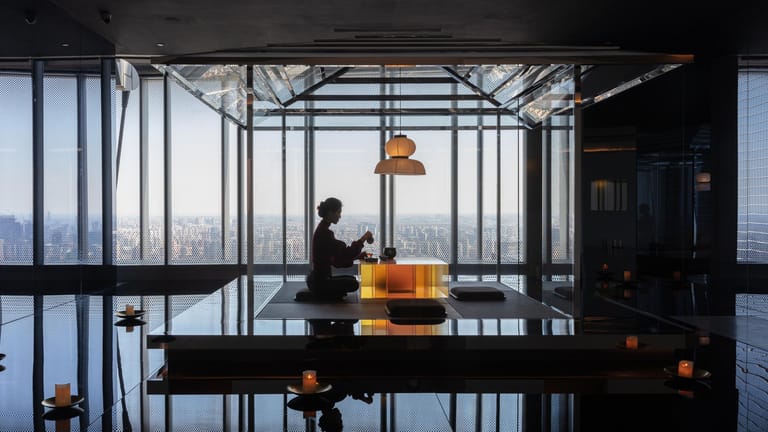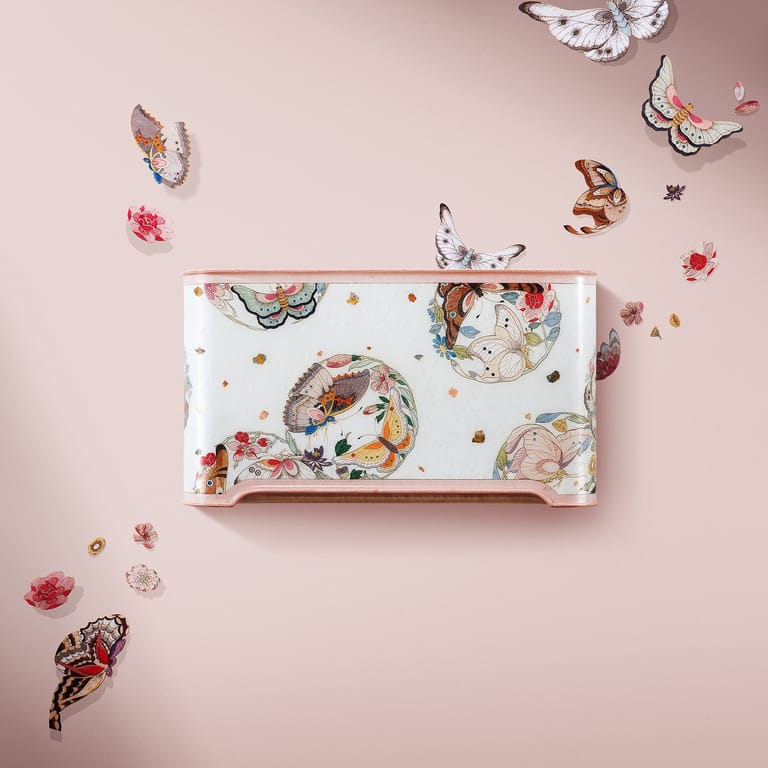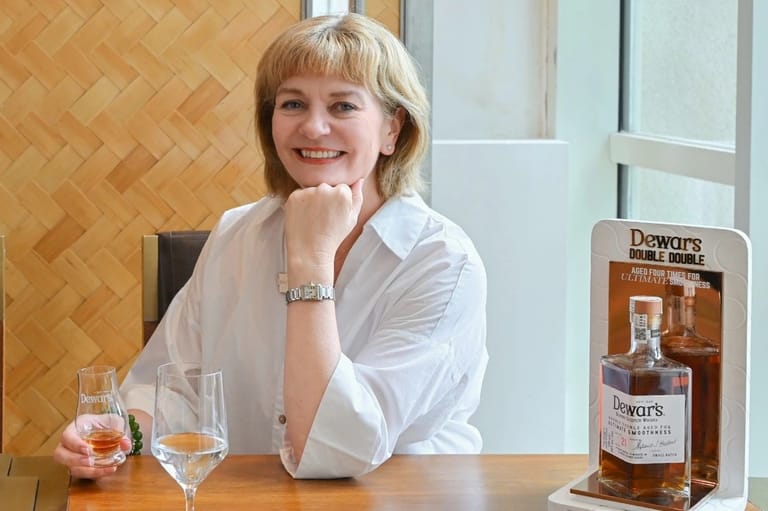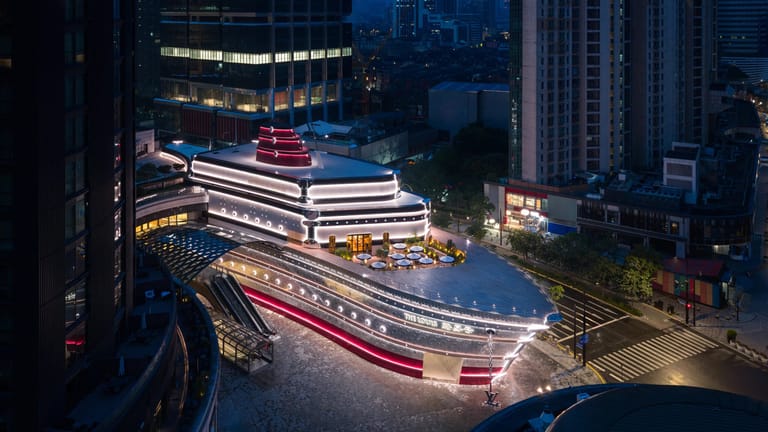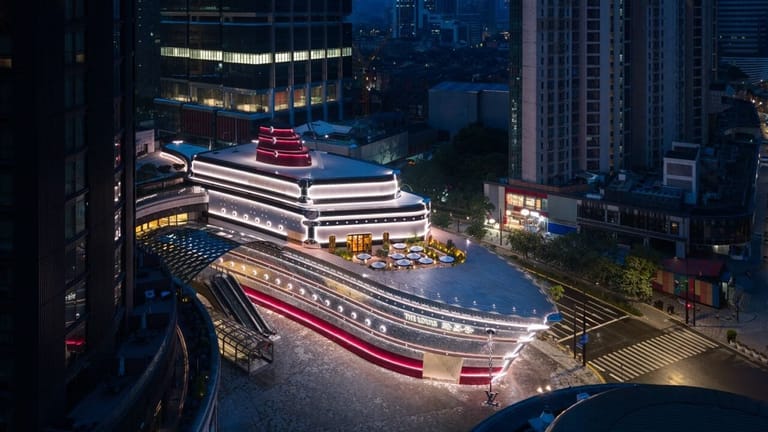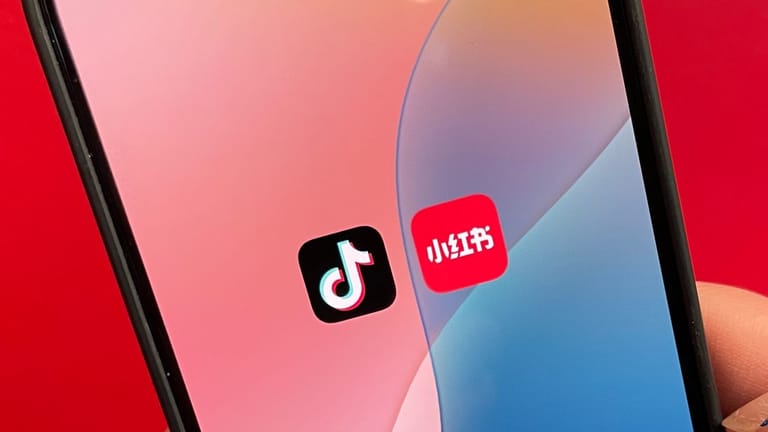How Viking is Transforming China’s Cruise Travel
By
Wenzhuo Wu

Published on
March 28, 2025

Jingzhi Brand spotlights the most forward-thinking domestic and global brands shaping China’s jingzhi(精致) landscape. Through in-depth storytelling, we explore innovation, cultural strategy, and market ambition, offering a holistic perspective on the evolving intersection of brand identity and China’s dynamic consumer economy.
As China’s outbound travel market recovers, Viking is setting its sights on catering to the sophisticated, experience-oriented Chinese traveler. Tan Wee Hoon, Senior Vice President of Product Development & Marketing at Viking China, shares insights into the evolving travel landscape, the growing appetite for immersive experiences, and how Viking is redefining luxury for Chinese consumers.
According to figures by the Shanghai International Shipping Institute, China is poised to become the world’s second-largest source market for cruises by 2030. The demand for refined, culturally captivating experiences is set to grow. In 2024, the number of outbound trips by Chinese residents has grown 41.3 percent compared to 2023, and their spending per outbound trip is estimated to increase steadily from 2027, driving up the demand for refined, culturally captivating travel experiences.
Chinese travelers are no longer content with traditional sightseeing; they seek deeper encounters with local cultures, seamless service, and thoughtfully curated itineraries. Viking, with its focus on destination-driven exploration and world-class service, is at the forefront of this shift, ensuring every journey is as enriching as it is effortless.

The Rebound of Cruise Tourism in China
China’s outbound travel sector has seen a strong resurgence post-pandemic, and while European destinations have recovered more slowly than those in Asia, the trend is shifting. “By 2026, Europe as a global travel destination is expected to reach or surpass pre-pandemic levels,” Tan notes. Cruise tourism, particularly among affluent and senior Chinese travelers, is gaining traction as they seek seamless, culturally enriching experiences beyond traditional sightseeing. Viking’s European river cruises have become especially popular, allowing travelers to visit multiple destinations in comfort, with services and experience details tailored to Chinese guests.
Viking embraces the jingzhi (精致) concept—refined luxury rooted in cultural authenticity and creativity—by prioritizing its product design around two core beliefs. “Time is the ultimate luxury, and travelers should never leave home and feel less comfortable,” Tan explains. A jingzhi cruise experience, therefore, must be worth a traveler’s time and offer an environment that feels as effortless and inviting as home.
To this end, rather than a ship-focused guest experience that most mega cruise liners offer, Viking specializes in elegant small to medium-sized luxury ships, with destination-focused cruises that enable guests to develop a deep connection with the cultures of the places they visit. At every port of call, Viking includes an onshore excursion or tour that integrates authentic local cultural elements into the experience. Beyond sightseeing, guests can participate in wine tasting, cheese making, or home visits with local artisans. Additionally, Viking invests significantly in selecting and training local guides, ensuring they provide guests with engaging cultural and historical insights.
Tailoring Viking’s Services for Chinese Travelers
Chinese travelers—especially seniors—often face challenges such as language barriers, unfamiliar cuisine, and accommodations failing to meet their needs when they travel overseas. Viking has meticulously addressed these concerns, enabling guests to feel comfortably “at home” while exploring Europe, so that they can fully immerse themselves in local cultures.
Every cruise features an entirely Mandarin-speaking service staff both on board and on shore, in addition to local guides. Viking provides Chinese travel concierges, affectionately known as “Little Red Men” (小红人) due to their red uniforms; they accompany guests on shore excursions, offering thoughtful assistance as well as removing language barriers between guests and the guides.

On the ships, Chinese guests can expect Mandarin signage and in-room amenities such as kettles, slippers, and universal electrical sockets, which are uncommon in typical European hotels. Every stateroom is also fitted with heated flooring and an anti-fog mirror in the bathroom, and televisions are pre-loaded with Chinese content. The Chinese-tailored onboard experience extends to curated Chinese books and mahjong tables.
Food is another key consideration. While Viking prides itself on offering authentic European cuisine, the company recognizes that many Chinese travelers, particularly seniors, prefer familiar dishes. The extensive onboard Chinese menu includes both buffet and à la carte selections, as well as an all-day self-service beverage station offering hot drinks. “We even designed a Chinese noodle bar available from early morning until midnight, ensuring guests have comforting, familiar food whenever they wish,” Tan adds.
Recognizing that multi-generational family travel is common in China, Viking has adjusted its global age policy, allowing Chinese guests as young as eight to join its river cruises, whereas the minimum age for other markets is 18. The company also offers pre-trip assistance that includes travel visas required for Chinese travelers, in addition to the usual insurance and flight arrangements.

Meeting the Demand for Personalized and Immersive Travel
Chinese travelers increasingly seek tailored and culturally rich experiences. In response, Viking offers about 20 river cruise itineraries for the 2025 season, ranging from 8 to 15 days and covering over 10 countries, including pre- or post-cruise land tour extensions in selected cities. Each itinerary provides flexibility, allowing guests to choose from included guided tours, independent exploration, or optional excursions tailored to niche interests. Experiences range from exploring Vienna’s street food scene to experiencing glass-blowing in Prague to visiting the studio of local artisans and artists in Serbia, making every journey engaging and meaningful.
Onboard, Viking creates immersive cultural moments through a destination-inspired “dish of the day,” themed dinner events such as “Taste of Germany,” and culinary demonstrations of local dishes, bringing guests closer to the culinary cultures of the places they visit. Guests also enjoy fun lessons on local language and etiquette, informative destination lectures, and local folklore performances. “Our goal is to offer guests a holistic, immersive destination experience from ship to shore. Excursions aside, we continue to bring the culture of each destination to life on our ships, whether through a meal, a performance, or an expertly led discussion,” says Tan.
Shifting Trends in Luxury Travel
Chinese travelers’ perception of luxury is evolving. “They are moving away from sightseeing hotspots to uncovering ‘hidden gems’ and experiencing destinations like a local,” Tan observes. Destinations in Eastern Europe, such as Croatia and Serbia, are becoming increasingly popular as travelers seek out less conventional destinations. Viking has responded by offering optional excursions covering attractions slightly off the beaten track, such as ‘local gem’ Mount Stanserhorn in Switzerland, in addition to the more well-known and widely visited Jungfraujoch, which is already included in the cruise ticket.
Another major trend is the rise of slow travel. “Affluent Chinese travelers have moved away from fast-paced, checklist-style tours, embracing slow travel tailored to their interests. They are in favor of customized, small-group experiences that allow for a less rushed and deeper engagement with a destination,” Tan notes in Luxury Through a New Lens: 2025 Jingzhi China Vision Report. Viking’s itineraries are designed to accommodate this shift, providing ample free time for independent exploration or “semi-personalization” of itinerary through the optional excursions.

Innovation, Sustainability, and the Future of Viking in China
Sustainability and digitalization are reshaping the cruise industry. Viking is investing in hybrid ship technology that reduces emissions by combining hydrogen fuel cells with diesel engines. “Environmental protection is becoming a core expectation for high-end travelers, and the cruise industry must innovate to meet these demands,” Tan emphasizes.
At the same time, digital advancements are transforming guest experiences. Viking’s WeChat Mini Program offers senior-friendly features, including large text size and an integrated audio translation function, making trip management more seamless for Viking’s core target of Chinese travelers. Free onboard Wi-Fi further enhances connectivity and convenience.
Looking ahead, Viking remains committed to offering culturally layered, destination-focused travel experiences while staying attuned to Chinese consumer needs. “We actively gather guest feedback to refine our product offerings, ensuring we continue to meet the evolving needs of Chinese travelers,” Tan explains. “We seek to understand but do not pander, because we want to help guests discover the real Europe and gain authentic cultural experiences beyond tourist clichés. The key lies in enabling them to do so comfortably as Chinese travelers.”
As Viking expands in China, the company is investing in talent development and consumer education. Through collaborations with Shanghai University for the Elderly and Shanghai Education TV, Viking has launched China’s first International Study and Leisure Program for Seniors, integrating cultural education with experiences tailored to mature travelers.
“We want to be more than just a cruise operator—we aspire to be a trusted travel brand that enables Chinese guests to explore the world meaningfully,” Tan concludes. By combining sustainable innovation, cultural immersion, and thoughtful personalization, Viking is redefining luxury cruise travel for the next generation of Chinese travelers.


